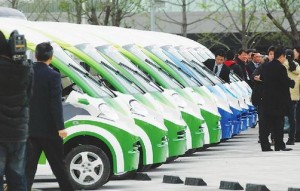China Aims To Ignite Green Car Market
The government of China is planning to pump and move in the subsidies and investments to boost China’s industry in green cars. China just did this so as to make itself even more sustainable and even more competitive in the field of green car industry. In account to this, China aims to sell over twenty million units by the year 2020. 
The State Council has presented this moth the blue print of generous subsidies to both green car producers and consumers. The imposition of such types of vehicles in this country aims to curb it over reliance on the use of imported oil.
In the same way, China has carefully plotted the sales of green cars in the country to reduce emissions and imprints of carbon in the environment. This also aims to speed up China’s restructuring in the auto sector to come up with environmentally sustainable models.
It was also added in the report that different core technologies in the country will take their toll investing on the said project of the China government. All of these will work altogether to build a stronger and more globally competitive industry for green cars.
It was reported recently that in a short-term period, China will focus in the production and designing of vehicles that make use of plug-in and electric hybrid vehicles along with the wider range of vehicles that come with engines that combust fuel in an energy-saving mode.
As a matter of fact, China authorities have planned to bring out and sell over five hundred thousand green vehicles by the year 2015. This is expected to increase ten times because the target green cars to be sold until 2020 is going to be a staggering five million units.
By the year 2020, the China government targets to come up with a production of two million plug-in and electric hybrid vehicles every year. This is going to be a very massive production of green cars for a single country, indeed and China is the only country with this kind of target.
China believes that with the use of such vehicles, consumers will be able to reduce fuel consumption by 6.9L for every one hundred kilometers by the year 2015. As for the energy-efficient vehicles, consumers are expected to reduce their consumption by 5.9L. By 2020, the target fuel consumption is going to be 5L for the passenger vehicles and 4.5L for cars, which are considered as energy-efficient.